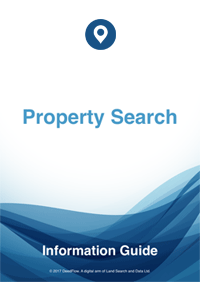Preventing Property Fraud
Contents
Overview
Property fraud is increasingly on the rise but the Land Registry have organised measures that you can take to reduce the incidence of fraud. This article explains those measures and teaches you how to put them into effect for your own property.
Five things you can do to Reduce the Risk of Fraud
- Obtain an up to date copy of your Title Register and check your ownership details.
- Check the Land Registry Day List.
- Add an email address and more postal addresses to your Contact address.
- Register a Property Alert.
- Lodge an RQ form with the Land Registry (if you do not live at home).
1. Title Register
You should obtain an up to date copy of your Title Register and look in the B section thereof to check that you are shown as the owner or registered proprietor. You should ensure that your name/s are spelt correctly and that all Christian names are included. If they are not you should send form ID1 to the Land Registry to correct the names.
2. Day List (Pending Registrations)
When you apply through us for a Title Register we will automatically check the Land Registry Day List which will tell us if there are any pending applications for registration. If there are you will obtain sufficient details of the pending transactions so as to enquire of the Land Registry what they relate to.
3. Add More Addresses to your Contact Address
Each owner is permitted to register up to 3 contact addresses. Such can include an email address and an address Abroad. This means that if the Land Registry discover suspicious activity they can contact you at each of your addresses, decreasing the likelihood of successful secretive transactions that do not have your consent, such as a squatter applying for a mortgage in respect of your property.
4. Register a Property Alert
Easements may also arise by implication, by prescription, by estoppel or by necessity. These types of easement are not created by Deed and do not appear anywhere in writing, but arise by Common Law. If they become subject to a court hearing and the court confirm the existence of the easement, they can then be registered by the Land Registry upon production of the Court Order, following which they then become express easements and accordingly appear in the Title Register.
5. Register an RQ Restriction
If you are not living at home you can apply on Land Registry Form RQ for the registration of a Restriction in the following terms:
No disposition of the registered estate by the proprietor of the registered estate is to be registered without a certificate signed by a conveyancer that that conveyancer is satisfied that the person who executed the document submitted for registration as disponor is the same person as the proprietor.
Such a Restriction immediately puts on notice any person dealing with your property, as they would receive a copy of the Title Register when dealing with the conveyancing, and section B of the Title Register would include the above Restriction. A solicitor acting for a purchaser or mortgagee would apply to the solicitors acting for the person selling or mortgaging the property for the appropriate certificate, which they would be required to sign, to relinquish the Restriction. Without the certificate they would refuse to complete the sale or mortgage.
Title Register
The Land Registry Title Register holds data relating to the property ownership, purchase price, mortgage, tenure, covenants, rights of way, leases and class of title.
£19.95Pending Registrations
This search enables you to discover the approximate length of time remaining to complete an already submitted application.
£9.95Associated Documents
Deeds creating Restrictions, Covenants, Easements, etc. are often kept digitally by the Land Registry and made available for sale due to their invaluable detail and content to assist in further understanding the Restrictions, etc.
£29.95


